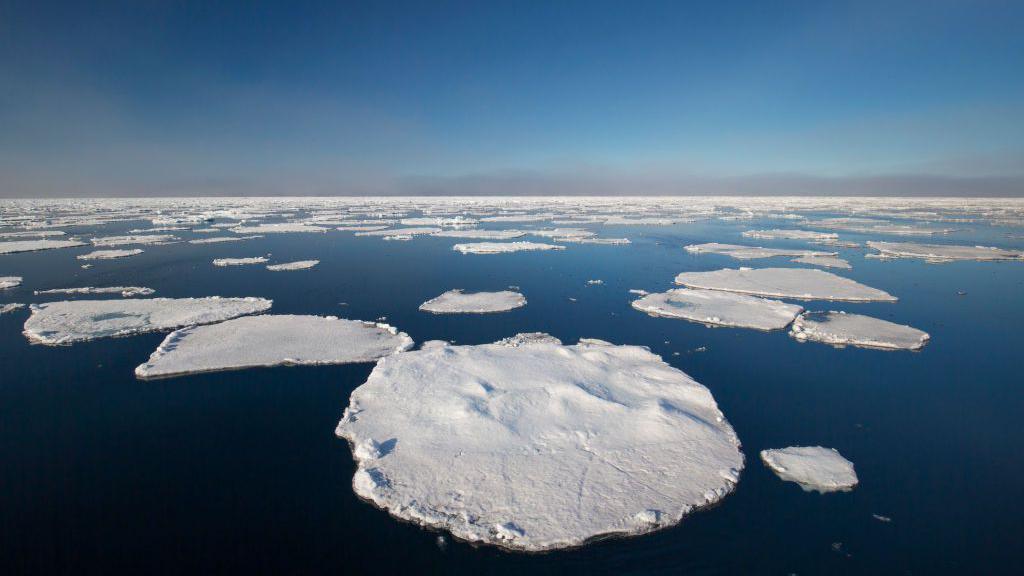Researchers track climate change in Arctic Circle

The University of Leicester team travelled to Svalbard for six days
- Published
Equipment to help monitor climate change has been set up in the Arctic Circle by researchers from the University of Leicester.
The team from the National Centre for Earth Observation travelled to the Norwegian archipelago of Svalbard to install thermal radiometers which will collect "precise, on-the-spot" temperature data.
The data is used to validate measurements taken by orbiting satellites and helps scientists understand how the region is being affected by climate change.
Research associate Abigail Waring said the station was one of the first of its kind in the arctic.

Abigail Waring says the climate records help inform other scientists and can influence government policy
"My first thought flying over the fjords and seeing the ice shelves, I genuinely welled up because it was just so stunning," she said.
"It really put into perspective that even though I sit behind a desk and look at data and we see these trends, it is really happening and it is really affecting people."
Climate scientists say the Arctic is warming four times faster than the global average, so accurately tracking temperature changes is essential.
Dr Jasdeep Singh Anand said taking continuous measurements was "very challenging".
"We're talking about a region that is 5.5 million square miles and a mixture of open ocean, sea ice, tundra, so satellites offer our best method of viewing this area over a very very long timescale," he said.
"However, because we're measuring the temperature indirectly from space, we need assurance that these measurements are correct."

Dr Jasdeep Singh Anand says measuring temperatures in the arctic is "very challenging"
The team learned how one of the glaciers they hiked up - the Kongsbreen glacier - had receded by 2,625 ft (800m) in six weeks and has not recovered.
They also observed how summer sea ice disappears earlier in the year.
Sea ice acts like a giant mirror by reflecting much of the Sun's energy back into space, but as rising temperatures cause it to shrink, the dark ocean below can absorb more heat, warming the planet further.
Ms Waring also said the trip was not without its dangers, as polar bears "roam freely".
"You have a polar bear designated safe zone but you're not allowed to go out of it unless you're with someone who's trained with a rifle," she said.
"They can walk onto the research centre and they have alerts for that, but it is quite scary to think you could just see a polar bear across the fjord."
Get in touch
Tell us which stories we should cover in Leicester
Follow BBC Leicester on Facebook, external, on X, external, or on Instagram, external. Send your story ideas to eastmidsnews@bbc.co.uk, external or via WhatsApp, external on 0808 100 2210.
- Published9 September

- Published17 April
